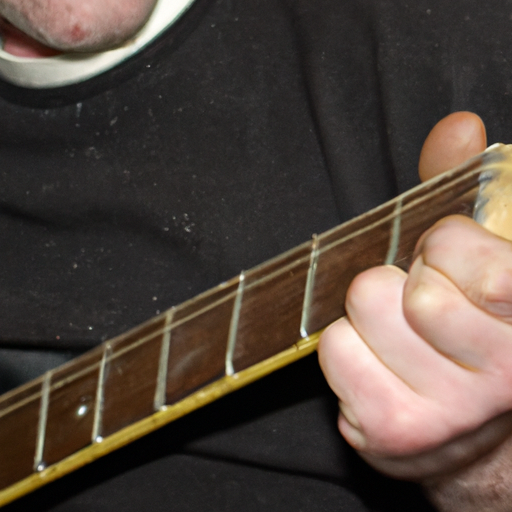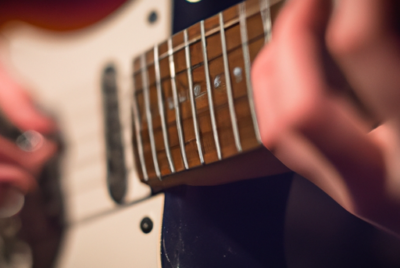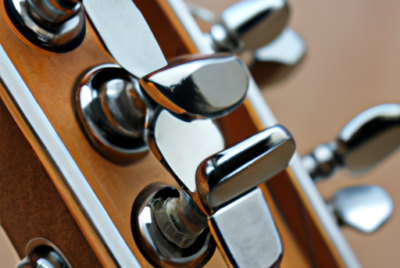What Are The Most Common Mistakes Beginners Make When Learning The Guitar?
So you’ve decided to embark on the journey of learning the guitar? That’s fantastic! However, just like with any new skill, beginners are bound to make a few mistakes along the way. In order to help you avoid these common pitfalls, this article aims to shed light on the most frequent errors beginners make when learning the guitar. By being aware of these mistakes, you’ll be better equipped to navigate your way through the learning process and accelerate your progress. So let’s get started and uncover these valuable insights that will guide you towards becoming a proficient guitarist.
Starting without proper guidance
When it comes to learning the guitar, many beginners make the mistake of starting without proper guidance. While it may seem tempting to dive right in and teach yourself, not taking lessons from a qualified instructor can hinder your progress. A qualified instructor can provide you with the essential foundation of knowledge and skills that are necessary for success in playing the guitar. They can guide you through the learning process, teach you proper techniques, and help you avoid common mistakes.
Another mistake beginners often make is relying solely on unreliable online resources. While there is a wealth of information available online, not all of it is accurate or suitable for beginners. The internet can be overwhelming, with a vast array of tutorials, videos, and tabs available. Without proper guidance, it can be challenging to separate the reliable sources from the unreliable ones. Relying on unreliable resources can result in learning incorrect techniques or developing bad habits that are difficult to unlearn.
Additionally, skipping the basics and jumping straight into advanced techniques is another mistake beginners often make. It can be tempting to want to learn flashy guitar solos or complex chords right from the start. However, without a solid foundation of basic techniques and fundamental knowledge, it can be challenging to progress. Building a strong foundation by starting with the basics is crucial for long-term growth as a guitarist.
Neglecting proper posture and positioning
Proper posture and positioning are essential aspects of playing the guitar that beginners often neglect. Holding the guitar incorrectly can lead to discomfort, pain, and even injury. It’s important to ensure that the guitar is positioned correctly on your body. The body of the guitar should rest comfortably on your lap, and the neck should be angled slightly upward. Avoid slouching or hunching over the guitar, as this can strain your back and shoulders.
Another common mistake is improper hand positioning. Your fretting hand should have a relaxed and curved shape, with your fingers positioned directly behind the frets. Avoid pressing too hard or too lightly on the strings, as this can affect the clarity of the notes you play. Similarly, your picking hand should have a relaxed and comfortable position, with your wrist slightly angled and your fingers hovering just above the strings.
Maintaining good posture while playing is also crucial. It’s easy to get lost in the music and forget about your posture, but slumping or hunching over the guitar can lead to muscle tension and discomfort. Make a conscious effort to sit up straight and keep your shoulders relaxed. This will not only help you avoid injuries but also improve your overall playing technique and sound quality.
Skipping warm-up exercises
Warm-up exercises are often overlooked by beginners, but they play a crucial role in preparing your body and fingers for playing the guitar. Not stretching before playing can result in muscle stiffness and tension, which can affect your playing technique and increase the risk of injury. Take a few minutes before each practice session to stretch your fingers, wrists, and arms. Simple stretches like bending and extending your fingers or rotating your wrists can make a significant difference in your playing.
Neglecting finger exercises is another common mistake. Your fingers are the primary tools used to play the guitar, so it’s essential to develop strength, flexibility, and dexterity in your fingers. Regular finger exercises can help improve your finger independence, speed, and accuracy. Simple exercises like practicing scales, fingerpicking patterns, or chord changes can go a long way in developing your finger strength and coordination.
Furthermore, many beginners forget to warm up before practicing. Jumping right into playing without warming up can strain your muscles and increase the risk of injury. Spend a few minutes at the beginning of each practice session playing simple exercises or warm-up songs. This will not only help prepare your fingers but also help you focus and get into the right mindset for practice.
Overlooking proper tuning
Playing with an out-of-tune guitar is a common mistake that beginners make, often unintentionally. A guitar that is not properly tuned will not only sound unpleasant but also hinder your progress. It’s important to understand how to tune your instrument correctly. Whether you use an electronic tuner, tuning app, or tune by ear, make it a habit to regularly check the tuning of your guitar.
Neglecting to check the tuning regularly is another mistake beginners often make. Guitar strings can easily go out of tune due to temperature changes, playing, or simply the passage of time. It’s crucial to make tuning your guitar a regular part of your practice routine. This will ensure that your guitar sounds its best and that you develop a good ear for tuning.
Lack of consistency in practice
Consistency is key when it comes to learning the guitar, yet many beginners struggle with maintaining a regular practice routine. Not having a regular practice routine can lead to slow progress and frustration. It’s important to set aside dedicated time each day or week for practice. This will help you establish a habit and make consistent progress in your playing.
Playing in short bursts instead of dedicated sessions is another common mistake. While it may be tempting to pick up the guitar for a few minutes here and there, it’s essential to have longer practice sessions as well. Longer sessions allow you to focus on specific techniques, work through challenging passages, and make significant progress. Aim for at least 30 minutes to an hour of focused practice each session.
Furthermore, failing to set specific goals for each practice session is another common mistake beginners make. Setting goals helps provide structure and direction to your practice. Instead of mindlessly playing through songs or exercises, identify specific areas you want to improve on and set achievable goals for each practice session. This will help you stay motivated and focused on your progress.
Improper finger placement
Proper finger placement is crucial for playing the guitar effectively, yet beginners often struggle with this aspect. Placing fingers too far from the frets can result in muted or buzzing notes. Your fingertips should be positioned just behind the frets to ensure clean and clear notes. Practice placing your fingers close to the frets and pressing down with the tips of your fingers for optimal sound quality.
Not using fingertips to press the strings is another common mistake. Using the pad of your finger instead of the fingertips can result in muted or distorted notes. Make sure to position your fingers in such a way that your fingertips come into contact with the strings, allowing for a clean and precise sound.
Another common mistake is unintentionally pressing multiple strings with one finger. This can happen when your fingers are not properly positioned or when you don’t have enough finger independence. Take the time to practice placing your fingers individually on the strings and avoid pressing down on neighboring strings unintentionally. This will help improve your accuracy and avoid unwanted string noise.
Neglecting to build finger strength
Building strength in your fingers is essential for playing the guitar, but it’s a mistake that beginners often overlook. Not practicing finger exercises can result in weak, fatigued fingers that struggle to produce clear and controlled notes. Incorporate finger exercises into your practice routine to gradually build strength and endurance in your fingers.
Avoiding difficult chords is another common mistake. Challenging chords can be intimidating for beginners, but it’s essential to push through the discomfort and practice them regularly. By gradually increasing the difficulty of the chords you practice, you will build finger strength and develop the ability to play a wide range of chord shapes more effortlessly.
Furthermore, not gradually increasing the difficulty of finger exercises is another mistake beginners make. It’s important to continually challenge yourself and push the limits of your finger strength and dexterity. Start with simple exercises and gradually increase the complexity as your fingers become stronger. This will ensure steady progress in your playing and enable you to tackle more advanced techniques.
Relying too much on tabs and chord charts
While tabs and chord charts can be helpful tools for learning songs, relying too much on them can hinder your overall development as a guitarist. Ignoring music theory is a common mistake that beginners make when they solely rely on tabs and chord charts. Understanding music theory can help you understand the structure of songs, chords, and scales, enabling you to play with more creativity and expressiveness.
Not developing ear training skills is another mistake. Ear training is the ability to recognize and reproduce musical sounds, such as melodies, intervals, and chords, by ear. Developing your ear training skills will enable you to play songs by ear, improvise, and fine-tune your playing. Incorporate ear training exercises into your practice routine to improve your musical ear.
Failing to learn to read sheet music is another common mistake. While reading sheet music may seem daunting at first, it’s a valuable skill that can open up a world of musical possibilities. Learning to read sheet music will allow you to play a wide range of music, from classical to contemporary, and enhance your overall musical understanding.
Lack of patience and perseverance
Learning to play the guitar takes time and dedication, yet many beginners lack the patience and perseverance required. Getting frustrated easily is a common mistake. Learning an instrument is a journey, and it’s natural to encounter challenges along the way. Instead of getting frustrated, embrace the challenges as opportunities for growth and learning. Take breaks when needed, and remember that progress comes with time and consistent effort.
Giving up too quickly is another mistake beginners often make. It’s important to stay committed to your goals and persevere through the difficult moments. Learning to play the guitar is a gradual process, and progress may not always be linear. Stay motivated by celebrating small victories along the way and reminding yourself of the joy and satisfaction that comes with playing the guitar.
Understanding that progress takes time is crucial for beginners. It’s easy to compare yourself to others and feel discouraged by their seemingly effortless playing. Remember that everyone progresses at their own pace, and comparing yourself to others will only hinder your own growth. Focus on your own journey and trust the process. With patience and perseverance, you will make steady progress and become the guitarist you aspire to be.
Disregarding proper technique
Proper technique is essential for playing the guitar effectively, but many beginners disregard this aspect. Strumming too hard or too softly is a common mistake. Strumming with excessive force can result in a harsh, overpowering sound, while strumming too softly can lead to a weak, muted sound. Practice finding the right balance and adjust your strumming technique to produce a smooth and consistent sound.
Using incorrect picking technique is another mistake beginners often make. Your picking hand plays a crucial role in producing clear and articulate notes. Whether you use a pick or your fingers, proper hand placement is essential for accuracy and control. Take the time to learn and practice proper picking technique, and be mindful of any bad habits that may develop.
Ignoring the importance of proper hand placement is another common mistake. The placement of your hand on the guitar neck can greatly affect your ability to reach chords, play scales, and navigate the fretboard. Practice proper hand placement by keeping your thumb positioned behind the neck and your fingers curved and relaxed. This will allow for better reach and smoother transitions between chords and notes.
In conclusion, learning to play the guitar can be a rewarding and fulfilling journey. However, it’s important to avoid common mistakes that can hinder your progress. By starting with proper guidance, paying attention to posture and positioning, warming up properly, tuning your guitar, maintaining consistency in practice, focusing on proper finger placement and strength, embracing music theory and ear training, cultivating patience and perseverance, and practicing proper technique, you can avoid these mistakes and become a skilled guitarist. So, pick up your guitar, take it step by step, and enjoy the process of learning and playing music.




